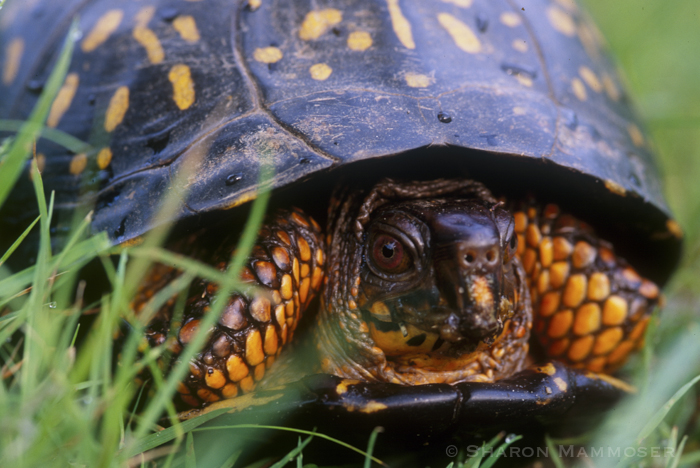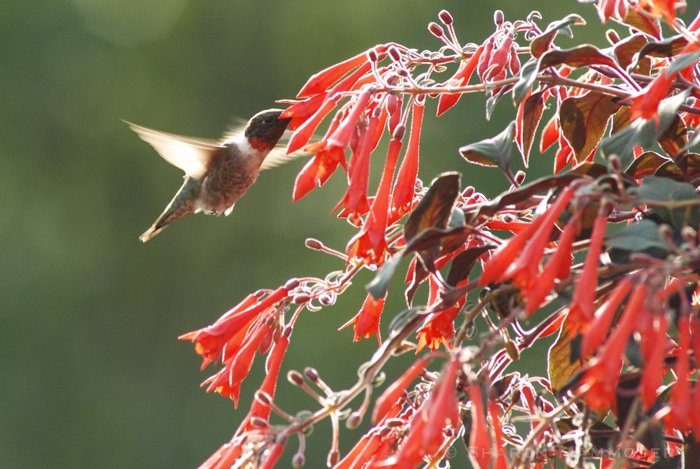Several weeks ago I did a POST on things you would stop doing if you knew the consequences… Here are 3 more things to add to the list:
1. Using RED dye in your hummingbird nectar.
2. Letting your cats roam free outside.
3. Making wild animals into pets.
Here’s why:
1. Using RED DYE in your Hummingbird Feeders
This is probably the most common one and the most innocent–It’s also the easiest thing to change! Sadly, we may not know the effects of our actions for years to come, if ever.
We are essentially turning our hummingbirds into guinea pigs–for no reason other than MONEY and convenience.
I bet you’ve seen the Red Nectar on your grocery store shelves and maybe you even buy it. Well let me be the first to tell you, this is completely unnecessary, and is harming the birds.
Other countries, including Denmark, Belgium, France, Germany, Austria, Sweden, Switzerland and Norway, have banned Red Dye #40 (as it is called) because of research that has proven it causes hyperactivity in children including ADD and ADHD, as well as depression, migraines and even some cancers. (ABC news 2013 and HERE)
And yet, here in the US, it is still available!
Sure, Perky Pet, the company who makes and PROFITS from this product will claim it has never been proven to have any ill effects on hummingbirds. But there have been no scientific studies on the long term effects of this dye to the tiny birds who ingest pounds of it every summer. How many scientists are out spending time researching this? It has not been proven to be bad, but neither has it been proven to NOT BE BAD. And you know what? It is completely unnecessary. I could say that 100 times and still people will buy it. Why take the risk? Here are 5 reasons why you SHOULD NOT use this product:
- It serves no purpose. The birds will come to a feeder with red parts, regardless of the color of the nectar.
- Nectar from flowers is CLEAR, not red.
- The dye is not metabolized by the birds but passes through their systems, (a day later their excrement is STILL red!) including their kidneys where it might be causing damage. Why take the chance?
- The red dye is petroleum based… and shown to cause DNA damage at high concentrations in mice…In children these dyes cause hyperactivity and depression. Would you want your children drinking this? And how much smaller is a hummingbird’s system than a child’s? Why would we add something that is COMPLETELY UNNECESSARY?
- You can save money and time by making it yourself. Just use a ratio of 4 parts water to 1 part sugar. You do not need to make it red!
If you’d like to read more about this, check out this awesome blog post by Julie Zickefoose.
If you are still skeptical, please read this.
Also, as a side note, according to Cornell Lab of Ornithology, it is not necessary to boil your hummingbird nectar unless you are making up large quantities that you are storing in the fridge for longer periods. The boiling slows fermentation–it is not essential and does not get rid of the chemicals in the water–it just makes them more concentrated!
2. Letting your CATS and dogs roam free outside
Records show that about 84 million people own cats and 40-80% of them allow their cats to roam free outside. Know how many animals they kill while they are out there?
It is estimated that cats kill 1.4 -3.7 BILLION BIRDS EACH YEAR and another 6.9-20 BILLION small animals like chipmunks, voles and mice.
Check out this article published about cats by the NY Times that says “More birds and mammals die at the mouths of cats, the report said, than from automobile strikes, pesticides and poisons, collisions with skyscrapers and windmills and other so-called anthropogenic causes.” Or this one by the USA Today or the Washington Post or by the National Wildlife Federation.
If you attract birds to your yard with nesting boxes or feeders, you are doing no one a favor, least of all the birds you say you love to watch. You are essentially feeding the CATS! Birds nesting in yards where cats freely roam are doomed. When they fledge (leave the nest), they are not yet ready to be on their own and live on the ground, under their parent’s care for a period of time. How well do you think those baby birds will fare if cats are around?
And dogs roaming free are no better as they are predators by nature. If they encounter a fawn or young turkey or other animal, you can bet they are going to go after that animal. That’s just what they do.
So what you can do as a pet owner is to keep your dog on a leash and keep your cat inside. Or create a fenced-in area, or if you have the time and patience, teach your cat to walk on a leash. It is possible! I know because I am doing it! I have begun this process with my two cats and am having success. Click HERE to read more!
 3. Making Wild Animals into Pets
3. Making Wild Animals into Pets
So one day you’re driving along and you see a box turtle crossing the road. You stop and get out, intending to move it across the road but then your 5-year old daughter begs you to let her keep it. You give in, thinking what could be the harm in this? You had a pet when you were a kid, she should have one too, right?
Wrong! If only you knew! Many turtles have delayed sexual maturity and a low reproductive output. While they may produce 200 eggs in their lifetimes, only 2-3 are likely to survive into adulthood. According to the Arkansas Natural Heritage Commission “While seemingly innocuous, the casual taking of box turtles for pets or short-term amusement can also be damaging, especially for populations already on the decline. The removal of even a handful of adult box turtles from an area has the potential to reduce population size over the long-term. Box turtles have very strong homing instincts. Box turtles released outside of their home range, even less than a mile, rarely adapt to their new location. Rather, a displaced box turtle will wander in search of its old home. This wandering puts the displaced box turtle at increased risk of being struck by a car, encountering a predator, being unable to find food, or unable to find a place to overwinter.”
Turtles face an ever-steeper slope of challenges, from habitat loss and fragmentation to road morality, and now, people wanting them as pets. In just ten years, from 1980-1990, the United States exported 100,000 box turtles to Europe and Asia. Imagine what those numbers might be today? And if you think you are just one person, taking one animal, be it a turtle, a salamander, a frog, consider how many animals that might amount to if EVERYONE thought the same way!
Please don’t say yes when your child begs you to let them have a wild animal as a pet. Wild animals deserve to stay wild! They do not deserve to spend the rest of their lives in solitary confinement just because your child demands a pet.
What have I missed? Please use the comment box to let me know or share your thoughts!




1 thought on “3 MORE Things You Would Stop Doing if you Knew the Consequences”
Comments are closed.